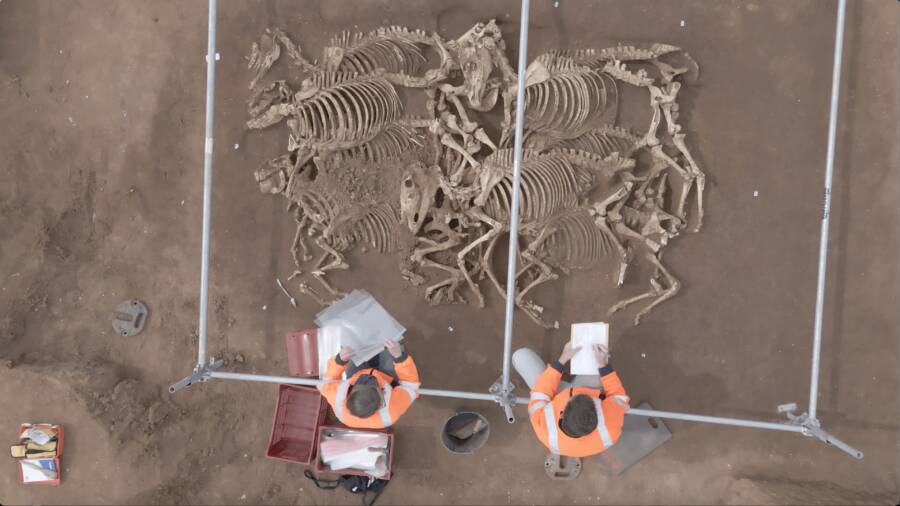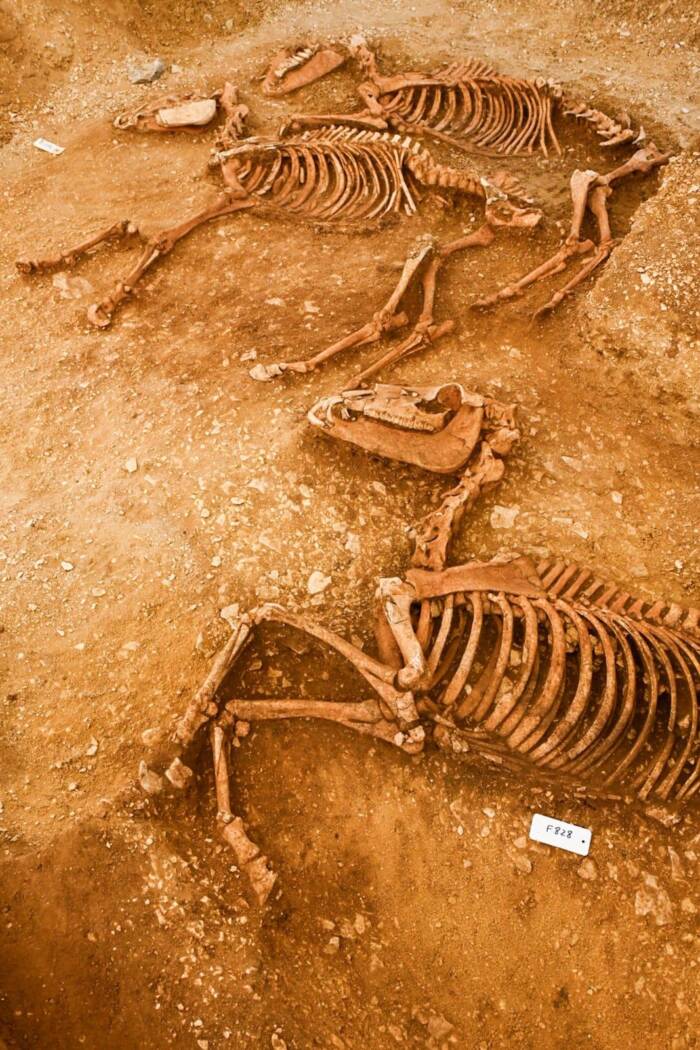Archaeologists aren't yet sure how the horses died, but it's possible that they were ritually sacrificed or were killed in battle during the Gallic Wars.

François Goulin/INRAPThe graves contained 28 male horses buried some 2,000 years ago.
While excavating a site in Villedieu-sur-Indre, France, archaeologists came across the skeleton of a horse. Then another. And then another. In all, they’ve identified the remains of 28 horses so far.
The horses were buried some 2,000 years ago, around the time of the Roman conquest of Gaul. However, many questions about this discovery still remain.
Discovering The Horse Burials In France
According to a statement from the Institut national de recherches archéologiques préventives (National Institute for Preventive Archaeological Research or INRAP), the discovery of the horse burials in Villedieu-sur-Indre came as archaeologists excavated a site from the Middle Ages.
As they uncovered buildings, pits, ditches, and a path from the 5th and 6th centuries, the INRAP archaeologists also stumbled upon nine much older pits containing the remains of horses. Radiocarbon dating suggests that the horses were buried some 2,000 years ago, between 100 B.C.E. and 100 C.E.
“We were surprised to find so many pits containing horses, because horses in Gaul were a sign of wealth and prestige,” INRAP scientific manager Isabelle Pichon told All That’s Interesting. “Above all, these animals were buried with care. This is not a rendering pit or the waste from a farm.”

Hamid Azmoun/INRAPThe horse skeletons were discovered during an excavation of a site from the early Middle Ages.
After finding 10 horse skeletons in the first pit, archaeologists came across two more horse skeletons in a second pit. They’ve identified a total of 28 horses across all nine pits, but only the first two have been fully excavated.
The horses they’ve identified so far all have similar characteristics. They’re young adults, all over four years old. They’re male. They’re small Gallic horses, about four feet high at their withers. And they were apparently buried with a good deal of care very soon after they died.
So, why were these horses buried in such a way at all?
Sacrifices, War Victims, Or Something Else?

Hamid Azmoun/INRAPArchaeologists aren’t entirely sure why the horses were buried in Villedieu-sur-Indre, but they do have some theories.
According to the INRAP statement, archaeologists aren’t sure why these horses were buried thousands of years ago. “The cause of death,” the statement noted, “accidental or intentional, has not yet been determined.”
“I hope that the study of the bones and the various analyzes that we will undertake will answer [the question of how the horses died],” Pichon told All That’s Interesting. “For the moment, we have not noticed any signs of slaughter on the bones of the horses.”
But experts have some hypotheses about what happened.
For starters, archaeologists don’t believe that the horses perished during an epidemic because the graves only contain adult male horses, not mares or foals. However, it is possible the horses were sacrificed.
“The hypothesis of animals sacrificed as part of a complex ritual, of which we only have a few fragments, must also be considered,” the INRAP statement explained. “The number of horses sacrificed constitutes a massive drain on the heart of a herd. This heavy investment then testifies to the importance of the sacrifice.”

Hamid Azmoun/INRAPThough archaeologists don’t believe that the horses died from disease, they’ve speculated that they could have been killed in a sacrifice — but their cause of death has not yet been determined.
Another possibility is that the horses died during the battles of the Gallic Wars when people in Gaul fought to defend their territory against Romans led by Julius Caesar. Indeed, similar mass burials of horses elsewhere in France have been tentatively linked to the Gallic Wars.
“These horses buried in a spectacular display recall the exceptional discoveries of INRAP in Auvergne, at Gondola and l’Enfer, Gallic sites in the Gergovie plain,” the statement explains. It adds: “[T]he mass presence of adult male horses dating from the end of Gallic independence, make the link between the burial of these horses and the battles of the Gallic War attractive. This hypothesis is also possible in Villedieu-sur-Indre.”
For now, the mass burial of horses in Villedieu-sur-Indre remains a tantalizing historical mystery. Did the horses perish from disease? Were they sacrificed in an ancient ritual? Or did they lose their lives fighting against the Romans? For now, the answer is elusive.
After reading about the 2,000-year-old horse burials discovered in France, look through these stunning photos of the Paris catacombs. Or, discover the story of La Belle Epoque with this gallery of beautiful images.





